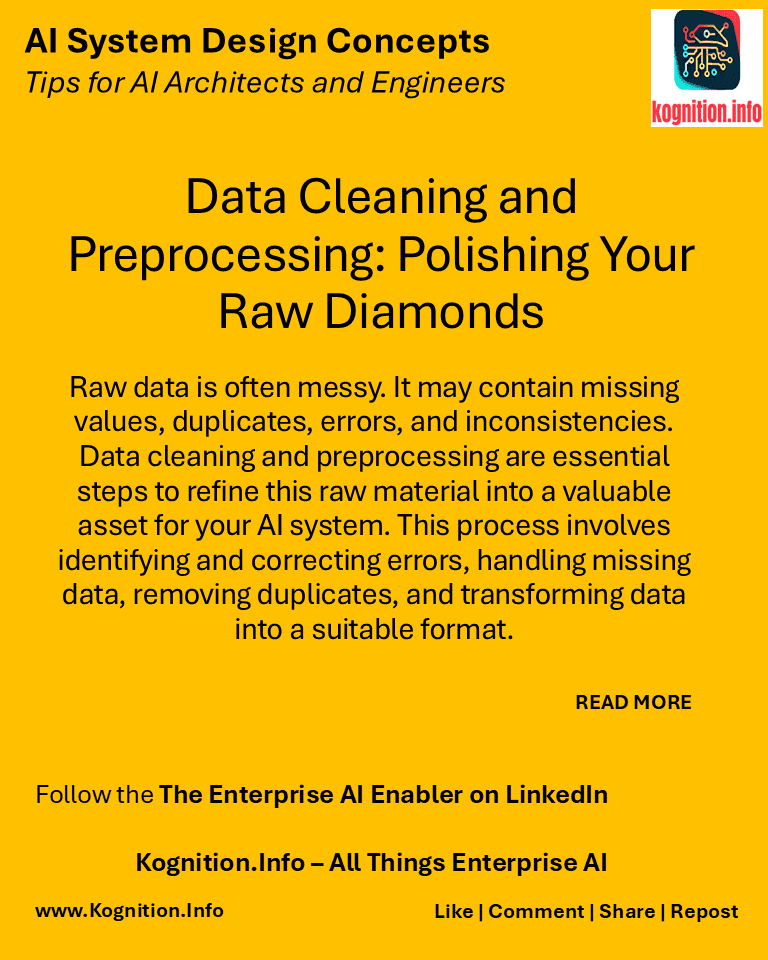
Raw data is often messy. It may contain missing values, duplicates, errors, and inconsistencies. Data cleaning and preprocessing are essential steps to refine this raw material into a valuable asset for your AI system. This process involves identifying and correcting errors, handling missing data, removing duplicates, and transforming data into a suitable format.
Use cases:
- Customer relationship management (CRM): Cleaning customer data to ensure accurate contact information and segmentation.
- Image recognition: Preprocessing images by resizing, normalizing pixel values, and augmenting data to improve model performance.
- Natural language processing (NLP): Cleaning text data by removing stop words, stemming, and handling inconsistencies in spelling and grammar.
How?
- Data profiling: Analyze your data to understand its characteristics, identify potential issues, and guide cleaning strategies.
- Handling missing values: Impute missing data using techniques like mean/median imputation or more advanced methods like k-nearest neighbors.
- Removing duplicates: Identify and eliminate duplicate records while preserving data integrity.
- Data transformation: Standardize, normalize, or scale data to ensure compatibility with your AI models.
Benefits:
- Improved data quality: Leads to more accurate and reliable AI models.
- Enhanced model performance: Cleaned data allows models to learn meaningful patterns more effectively.
- Reduced bias: Minimizes the risk of biased models due to flawed data.
Potential pitfalls:
- Over-cleaning: Removing too much data or applying inappropriate cleaning techniques can introduce bias or lose valuable information.
- Ignoring context: Blindly applying cleaning rules without considering the specific data and its context can lead to errors.
- Computational cost: Complex cleaning operations can be computationally expensive, especially for large datasets.
